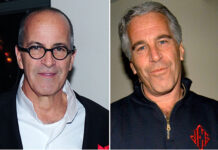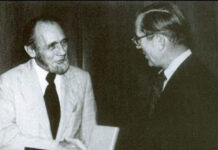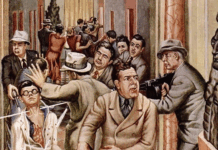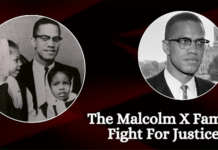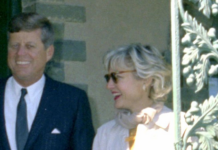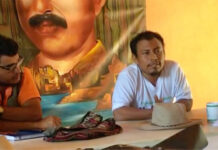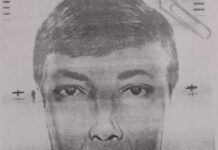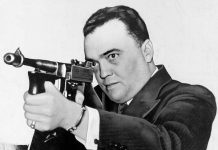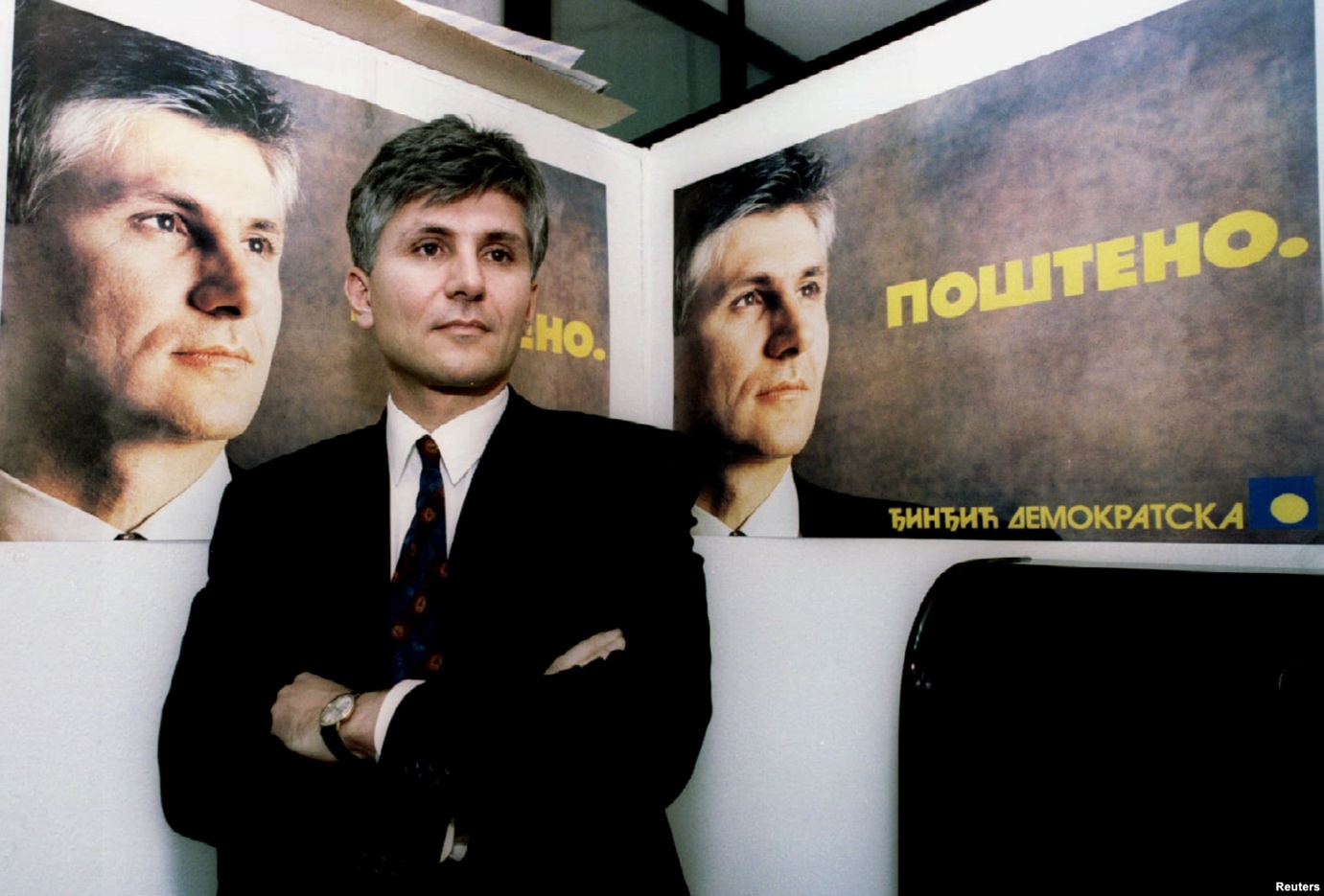
Suspicion lingers that he was killed with the assistance of the CIA or other Western intelligence services when he began to question U.S. regional designs in the aftermath of the 1990s Balkan Wars.
The right of humanitarian intervention, if it exists as a category in international law, is premised on the ‘good faith’ of those intervening. That assumption of good faith is based not on their rhetoric but on their record, in particular their record of adherence to the principles of international law, World Court decisions, and so on. But if we look at the historical record, the United States does not qualify.
Noam Chomsky
On March 12, 2003, Serbian Prime Minister Zoran Djindjic was fatally wounded by a gunshot while entering the Serbian government building where he was supposed to meet the foreign minister of Sweden. According to the official verdict, a member of Serbia’s Special Operations Unit (JSO), Zvezdan Jovanović, fatally shot Djindjic from the window of a building approximately 180 meters away.[1]
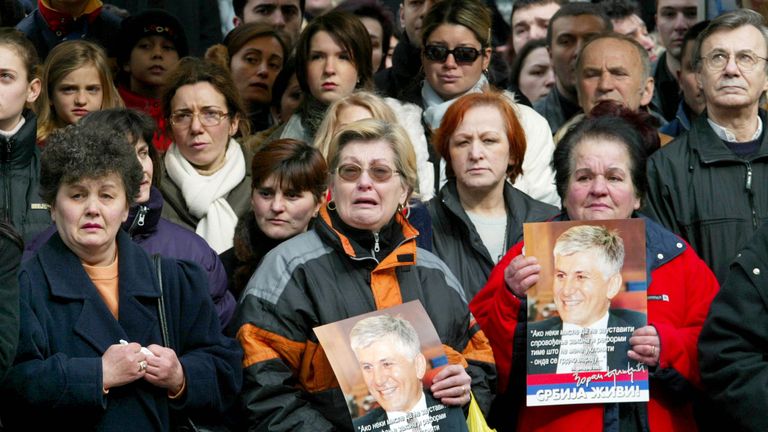
However, according to Milan Veruović, Djindjic’s bodyguard who was also wounded in the attack, the shots had to have come from the opposite direction; that there were three shots instead of two; and that there were two snipers.
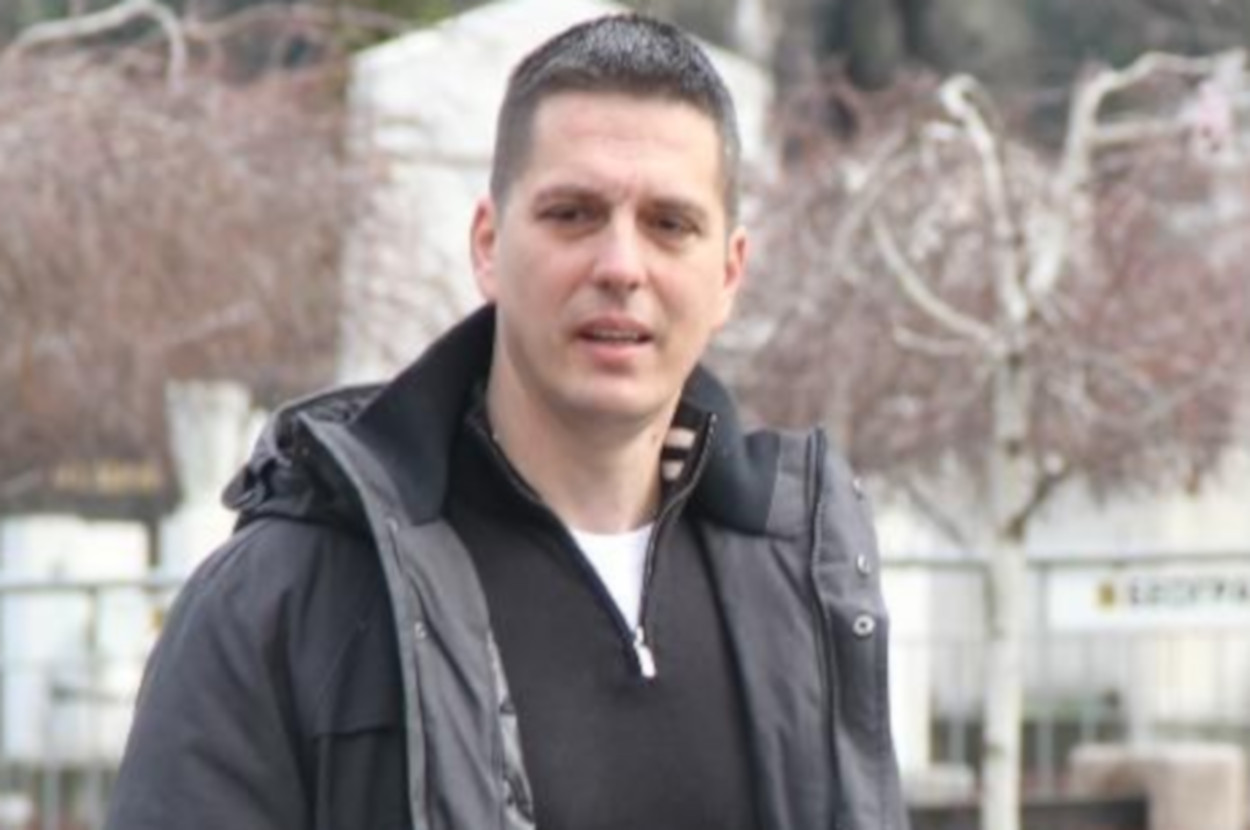

In September 2014, Veruović and journalist Nikola Vrzić published a book, The Third Bullet: The Political Background of the Assassination of Zoran Đinđić, which concluded that “the expertise on which the official version is largely based, is completely untenable, contrary to the laws of physics and the physical evidence and the testimony of witnesses. Many material proofs were not analysed.”
To discover the political background, the authors analyzed Djindjic’s political activities over a period of several months before his death, finding that “he had become a threat to the Pax Americana,” which could be seen in his relationship with The Hague Tribunal on Yugoslavia to which he “didn’t want to hand over war archives and generals.”
Djindjic further mentioned the revision of the Dayton Agreement questioning the independence of Republika Srpska if the issue of Kosovo and Metohija is not discussed (via UN Resolution 1244). In the last interview he gave on March 6, 2003, Djindjic expressed concern that his Western allies “are not honest friends of Serbia and are not willing to discuss the Kosovo issue, but rather,” he suspected, “under wraps working on its independence.”
After his death, his “self-proclaimed successors” completely turned his policy in favor of Western interests; and all the threats to the Pax Americana were gone.

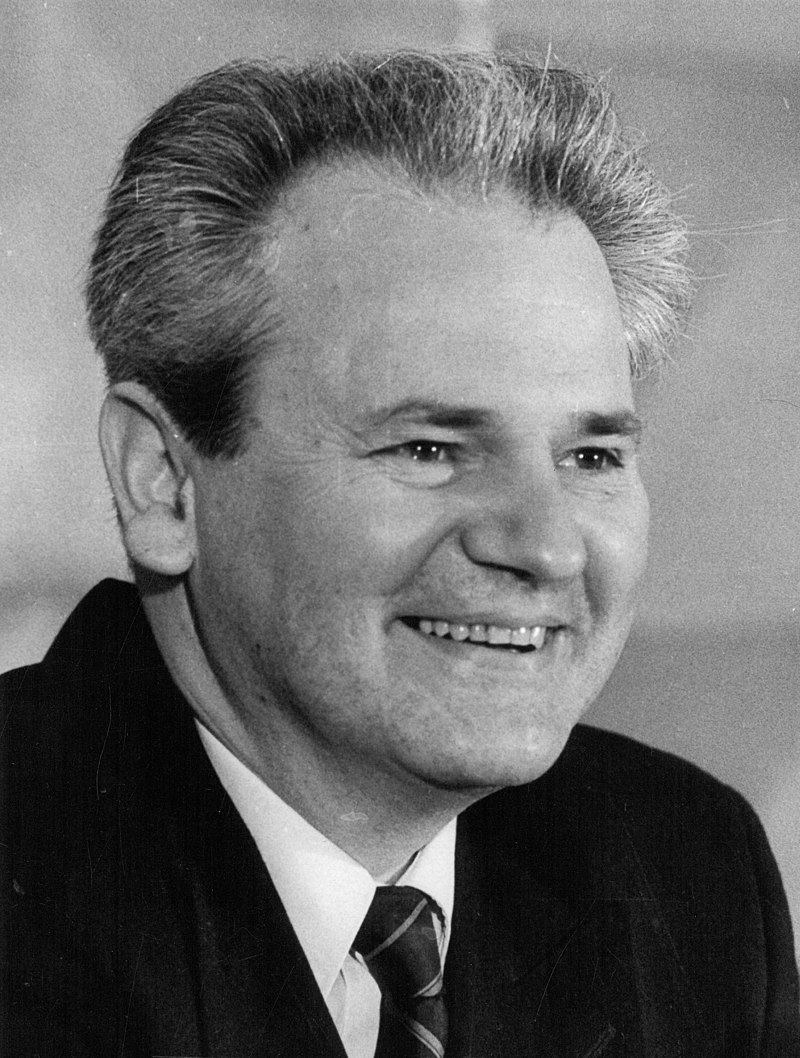
The backdrop for the assassination was the U.S.-NATO war in the Balkans which had been aimed at breaking up the Yugoslav federation and isolating and then removing Serbian Socialist leader Slobodan Milošević (1989-2000), who was put on trial for war crimes and genocide at the International Criminal Tribunal for the Former Yugoslavia (ICTY) and died while in custody.
The U.S.’s primary goal was to a) prevent the re-emergence of a strong independent Yugoslav state, which had existed under Tito’s leadership; b) legitimize NATO; c) promote neo-liberal economic policies and enable U.S. corporate penetration of the Balkans; and d) set up regional military bases such as the giant Camp Bondsteel built after the U.S. bombing of Serbia and Kosovo. Kosovo, then established independence from Serbia in 2008 as a result of the U.S.-NATO invasion on behalf of the Kosovo Liberation Army (KLA).[2]

Interview with Author of The Third Bullet
This article is based on the translation of a video interview on a local Serbian TV station with Nikola Vrzić, co-author of the book The Third Bullet, about the controversies surrounding the Western-orchestrated assassination of the Serbian Prime Minister, Dr. Zoran Djindjic, in 2003.
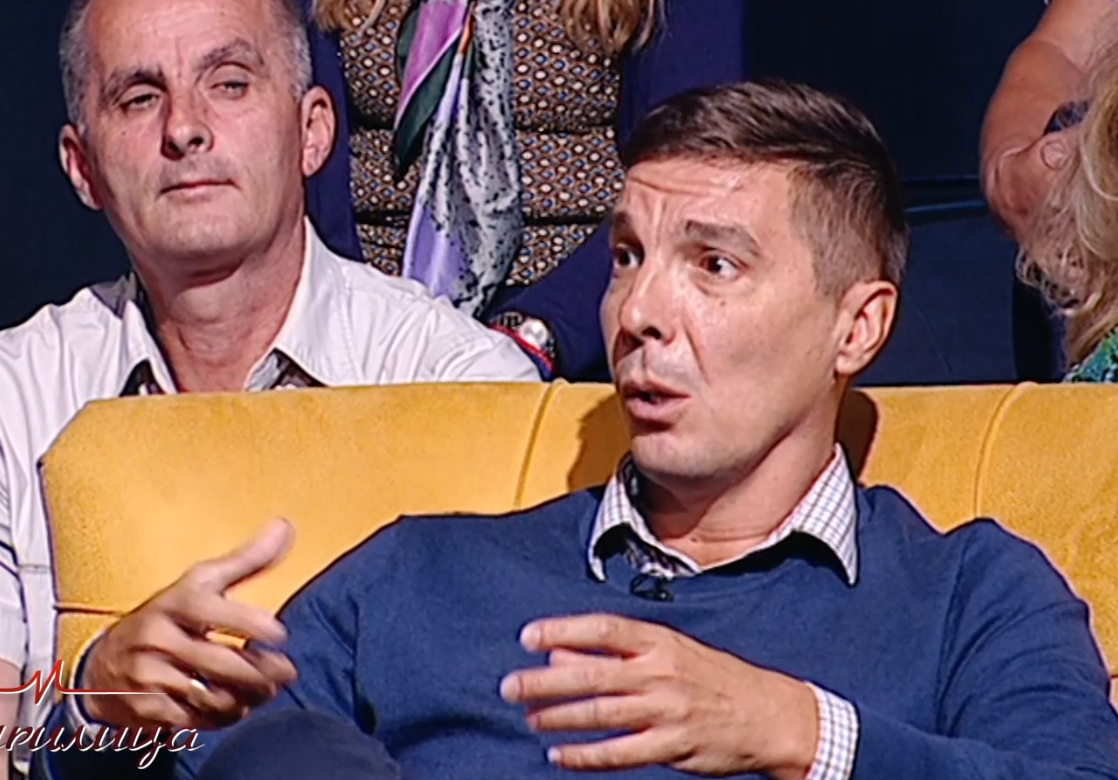
TV host: Let us try to show the situation from 2003 to our TV viewers from the second half of the year when at the doorstep of the editorial office of NIN , one famous [Serbian] lawyer, who happened to be a former judge, arrived and he analyzed with you the indictment, which was at that moment published by Belgrade news agency VREME, because they were the first ones to publish it: the indictment against Zoran Djindjic’s murderers and that man tells you in your editorial office…
NV: Nobody was doing any such thing at the moment because simply…
TV host: He communicated something which sounded incredible because there was a top-notch lawyer in front of your eyes who tells you: “Dear ‘children,’”[3] this indictment does not hold water. This indictment is impossible. Nobody can be charged on the basis of it.
NV: …and then the digging [investigative journalism] process began.
TV host: Your news agency got interested in the story?
NV: Absolutely. You know what…It was the PM of our country who was assassinated.
TV host: Can you remember the name of that man? Is it relevant?
NV: No, it is not that relevant. In any case, by following this lead, we began digging for more information. In that particular situation the court had all the necessary documents but the public did not. It only heavily depends on what is being “presented” to the public as the official truth. I started thinking. I established contacts with some people.
TV host: That was your reporter’s duty?
NV: Yes, on the very day of the assassination, it was a Wednesday, I still remember that March 12th of 2003. My colleague Slobodan Ninkovic, Batic Bacevic and I were writing reports together. Milan Veruovic [Djindjic’s bodyguard] told the truth in public in the Kaziprst report then. It was some time around August already, I think or around that time and he declared that they were shot at not only two times but three times.
At some point we received this analysis of the indictment and I got assigned to get in touch with Milan Veruovic and to try to write a story about what happened but he did not want to talk about it at that moment. We did not know each other at all before. I tried to find some documents in a roundabout way.
The first document was the coroner’s report. When all the puzzle pieces fell into place, I compared that one document with what was written in the indictment [and] I realized there was something seriously wrong with it. Some injuries were noted down which were not in line with all this, it got confirmed later when I got hold of other documents. We do not have to go into too many details.
In any case, that is how I started working on it. It might be interesting to mention that, you know the way some reporters like to build their image by claiming that they got threats from this person or that person, my life is in danger, etc. but I have to say that it never happened to me except back then when the first article was published. It may have been a coincidence, I am not sure but I got three “friendly” warnings, sort of advice from three different sides, to set that story aside, not to have anything to do with it. I did not want to give up. And at that moment we wrote, my story had a follow up the following week but at that moment we sent a public warning as to what happened, we did not mention anybody’s names and I shall not mention them now, but in any case we said if that happened again, if we got this sort of warning and threat again, that we would expose the truth by publishing everything.
But we would not give up on the story. Such intimidating warnings did not continue and we went on with our investigation. The culmination of the whole story was at the end of the book we wrote by the title The Third Bullet, in which for the first time, indeed, all the documents available to the court were used and what is worth mentioning is that everything was written based on the court documents. There were official documents from our police, and our prosecution, the minutes from the hearings and police investigation, etc.

TV host: For the sake of our viewers, you are not refuting the indictment against a group of people who were charged with our PM’s assassination. You are not denying their guilt. You just say something which is in fact complementary to what was carried out in court proceedings. You say that there may have been more assassins in all likelihood and you are also putting forth two claims that seem rather significant to me. You say that the people in close proximity to the PM Zoran Djindjic then, as if they were not interested enough nor committed to the cause to uncover the truth of the assassination of our PM.
Your second claim is that you were under the impression that the top echelons in the Serbian police and the top ranks of the public prosecution and court structures ignored some facts, some were falsified or “kicked into the long grass” so as to reach a verdict which could be true but it was certainly not complete and did not represent the real truth about what happened on March 12, 2003. Was this fundamentally true what I have just said?
NV: Well, the idea…, so, our conclusion was… Milan Veruovic and I wrote the book together and our conclusion was that the conspiracy was way bigger and that it was impossible that what we noticed that others failed to notice it. On the contrary, there were many indicators that the truth was systematically being concealed and “directed” toward one side only.
Whether Zvezdan Jovanovic [who was convicted of the killing and sentenced to 40 years in prison] was there, or whether he was the one to shoot, I do not know that. We are displaying the facts. So I mentioned him here. We have his admission [of guilt], then we have a fact that there are many odd inconsistencies in his admission. For instance, he says: “I shot from a room on the first or second floor of the building.”
According to ZKP [the Serbian law on criminal procedure], the investigating police officer of the person who is admitting this sort of thing has a duty to check each inconsistency. Why? So as to prevent a person admitting a crime which they had not committed, in order to protect somebody else. This was not done in this case. Moreover, Zvezdan Jovanovic was taken to a place to show [because the official version says that the assassination was attempted a few times earlier] in Bubanj Potok and by the Parliament Building and the Main Post Office.
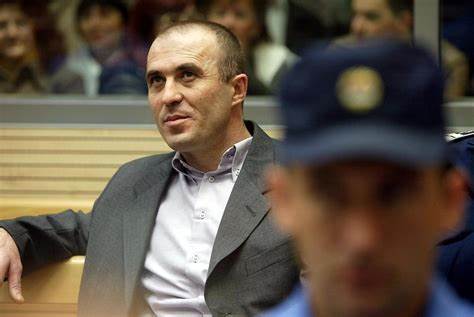
He was taken everywhere to all these places and he was not taken to the Admiral Geprat Street only from where it was allegedly shot, so that he could show the police officer and say “I shot [the gun] from here” for them to check if they even knew, complete with the explanation [which was by the way an insult to our intelligence], he was not taken there allegedly so as not to tamper with the crime scene whereas all that was happening when the building was already fully functioning again.[4]
We should not ignore the fact that there is no material evidence which links that man with that office where it was shot from. This is not simply my interpretation of what happened but that was confirmed in the court. And there is the third fact, because all the witnesses were called to give their testimonies and in this case ordinary citizens who were there in the Admiral Geprat Street, all of them confirmed that they saw somebody else and not him [not the person who allegedly admitted his/her guilt]. So I suggest that everybody should draw their own conclusions. It is not up to me to say anything [i.e., which might be misleading to others].
TV host: There was an eyewitness who was sure…
NV: It’s been a while since then so I cannot remember all the details but there were five, six, seven witnesses from that building in the Admiral Geprat Street who saw the assassins fleeing the scene. All of them were taken “to do the identification” behind that glass surface the same as what we can see in the movies; none of them recognized [identified] that man but they said some other people were there so in that way the photo robot was created and it was systematically covered up, and there was an assassination attempt on the highway by the Belgrade Arena.
At the time it was called Hala Limes [the Limes Hall] where Bagzi was caught. That was a very good “episode” because it was extremely consistent. What did it indicate? That the police at the time did have a criminal in their hands who found himself in a strange situation with the procession of people in which the PM was. We possess the complete records which are part of the judicial/court material. That is how I have them available.
Nobody gave that to me as a gift. That is how we got hold of all these documents. That incident was characterized as an assassination attempt by the people in the immediate security personnel of Zoran Djindjic. Bagzi was caught, a man with a huge police file , the man whose arrest was being prepared because from that time there was that famous story where he witnessed against the Zemunski Klan[5] in public, Bagzi was placed under surveillance a few days before that. Korac’s commission later knew very well.
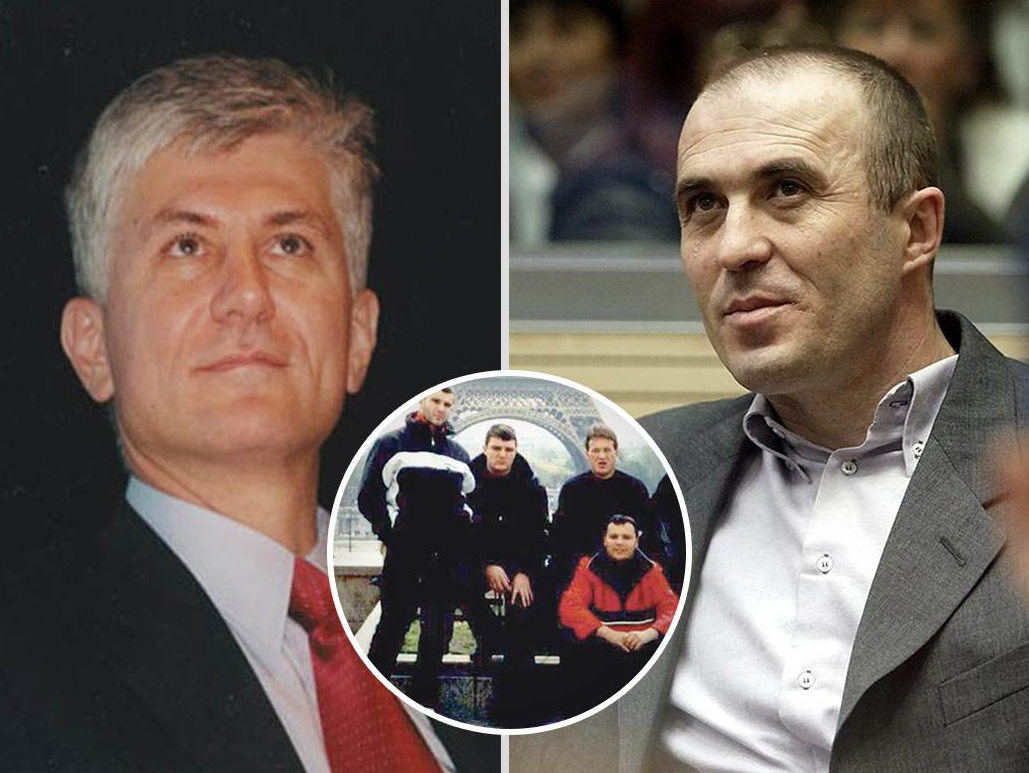
So he had a hefty police file already. The most important thing was that it was completely hidden during the trial. It will turn out during the legal trial that Bagzi concealed the crucial fact that the so-called Djura Mutavi took part in the provision of the truck, who will later become “the cooperating witness.” Both of them became cooperating witnesses.
But the police at that moment caught Bagzi telling a lie, they found out that Djura Mutavi, who was part of the same criminal group, that they participated in all that, in the police report which originated from the police of the City Police HQ to the Public Prosecution and then later to the Court; the identification of that Djura Mutavi was concealed. Bagzi got the police report for something totally different and he was set free. That is when the 12th of March could have been prevented. This is what I am trying to say. The police, in fact some of its parts, not the whole police hierarchy, actively participated in…
TV host: Is it true that the Minister of the Police deputy, Mr. Nenad Milić, threw out Mr. Veruovic from his office when Veruovic requested Bagzi’s arrest?
NV: Veruovic did not request Bagzi’s arrest, but Veruovic was sent by Zoran Djindjic to visit Nenad Milic in his office to look into the matter, why Bagzi was set free [from prison]. Milan Veruovic gave that testimony in court, Nenad Milić did not deny it of course but he interpreted it differently. But I say again this is a fact in the same way as what can be seen in the report of the Korac Commission[6] that it was exactly Milić, the Deputy to the Minister of Internal Affairs at the time, who was in charge of the complete security system. They knew…
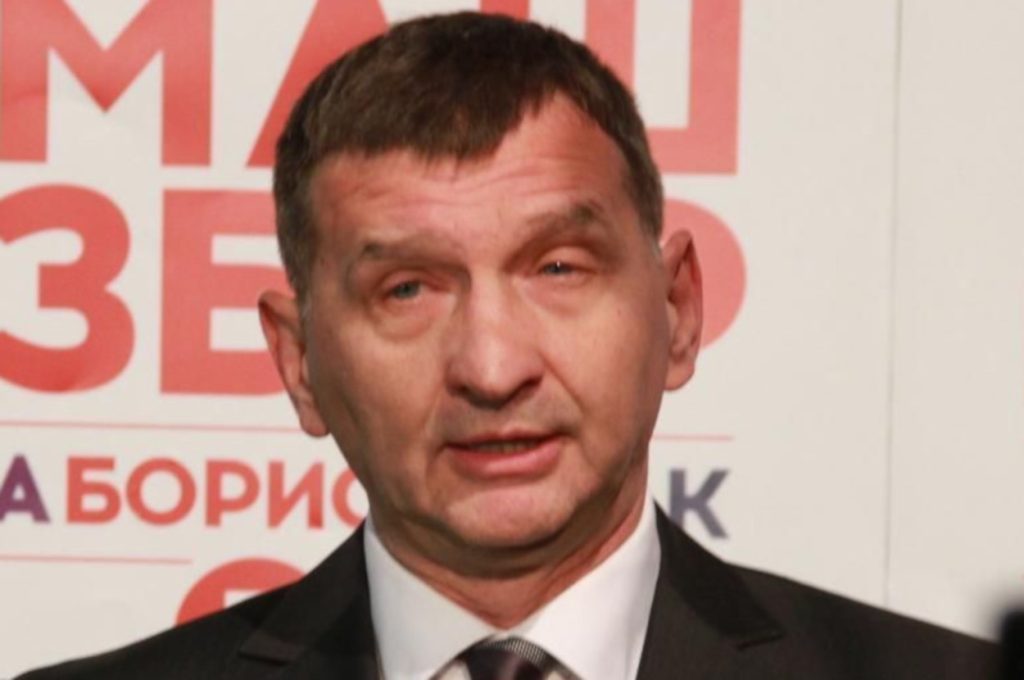
TV host: Did they know that the assassination was being prepared?
NV: It was written in the report by the Korac Commission clearly for anybody who wants to read it, that there was a need to raise the level of security to the first degree of protection, which would involve anti-sniper protection. In another place in this report it was written that Nenad Milic was in charge of that scope of work, but that was not done. It remains a mystery, why not?
TV host: I have found in the documentation that Nenad Milić did not communicate the information obtained from the U.S. Ambassador that the assassination was being prepared.
NV: It was in fact… Vladimir Beba Popovic who gave his testimony under oath before the Special Court, talking about his meeting in his company office, where Nenad Milić and Čedomir Jovanović were, with the members of the British MI6 who allegedly warned them, or at least told them, that the assassination was being prepared. That information did not reach our PM Dr. Zoran Djindjic then. The security measures were not heightened. Quite to the contrary. Even the cameras were off.
TV host: Shall we now make one conclusion that the then-wife of Mr. Milić, Mrs. Jelena Milić, who happens to be the chief NATO lobbyist in our country…I can assume that all these are “coincidences” but it is interesting that all these coincidences have since been confirmed as true in the court briefs.
NV: There are a lot of other interesting moments there.
TV host: I am sorry. At that moment the acting Minister of Internal Affairs[7] was Nenad Milić, given that…
NV: Essentially yes.
TV host: …given that Dušan Mihajlović was “pushed aside.”
NV: Yes, a few months earlier.
TV host: Dušan Mihailović kept a low profile only…
NV: More or less, yes.
TV host: The minister appeared in the media whereas all the power was in the hands of a man in whom the Democratic Party[8] placed utmost confidence. In fact, the Democratic Party positioned their own person to run the operating duties. I found an interesting piece of data with Mr. Boza Prelevic.[9] He says that the prosecutor is in charge of that crime scene.
That was the district attorney? At that moment, he was banned from appearing in the yard of the government building, banned from appearing at the crime scene. No such thing has ever happened before, that there were “the powers that be” which would remove the public attorney from the crime scene and forbid him/her to look into what happened there.
NV: Yes, many traces were destroyed there on the spot. But one can see; allow me to give an example as to how I drew my own conclusions. Perhaps one small detail: The testimony of the policeman who opened the door of the Government building in front of whom the then-injured PM fell to the ground and all the rest of them gave their testimonies that there was a massive pool of blood remaining there.
When one takes a look at the coroner’s report for our PM, the exit wound from which the blood was issuing was surely a gaping wound. However, once you look at the photos from the investigation, there is not one single drop of blood, which means it was wiped up in the meantime. There is no other logical conclusion to be drawn.
TV host: Which part of the Serbian police was in charge of the investigation of Zoran’s assassination?
NV: It was the City of Belgrade MUP [Ministry of Internal Affairs] together with USKOK and the then UKP. There was simply one [vague] part, the bullet shell casings which were found, now while I am trying to recall some characteristic moments …we have some testimonies that some shell casings were found immediately underneath the window in Admiral Geprat Street. In the end, in the official version, the opinion that they were found only in the evening will prevail under the reflectors’ light.
One has to wonder what sort of bullet casings were those that they appear and then they disappear and then they reappear in the evening and a more serious question arising whether these were the same shell casings. And then, if you try to link that with the gun which was found and the way it was found…err…,but we really cannot go into too many details [in this TV report].
TV host: You wrote that the eyewitnesses saw one gun and that another gun was sent to Germany for a forensic expert’s opinion.
NV: Yes, it is a great issue and also the gun which was found and the way it was found is extremely disputable, if one compares the testimonies of the cooperating witnesses, some traces of blood were found as well. That was noted in the report by the police officer, who managed the investigation and in the report by the presiding investigative judge. They reported on the red traces similar to blood in that rifle grip. They requested an analysis but the analysis was never provided and the gun was sent to the Germans without the traces of blood. And not only that but, from the look of things, when you take a closer look at the comparison of the photos, the photo which was sent to the Germans was not the same at all.
The gun which was found had a wooden gunstock and gun grip but the one which was sent to the Germans…and it surely should be the same gun sent to the Germans…,that other gun had a plastic gunstock. That is what can be seen with the naked eye. The Germans talk about a perforated place where the serial number was and in the other one the place where it was removed, in that it was not a hole which can be seen in the photo sent to the Germans, etc., etc., and, moreover, there were serious disagreements among the cooperating witnesses as to who went to hide the gun, where, at which moment, which really casts huge doubts on this story….
TV host: And all that is in the minutes. In your book you co-wrote with Milan Veruovic, you wrote an interesting thing that there are eight people from Djindjic’s security personnel…
NV: Nine; including Milan [Veruovic] there were nine.
TV host: OK. It means that eight people plus one person heard that, apart from the first two bullets, one more bullet was fired. And of these nine people, five of them saw the moment when…
NV: And not only that….They saw the moment when the third bullet…that was the moment when Zoran Djindjic was already lying on the ground and Milan Veruovic was already lying on the ground injured with the bullet, five of them all saw when the third one which everybody heard hit the wall of the building. The Germans in Wiesbaden delivered the forensic expert opinion of the fragments of that bullet and the report from Wiesbaden notes in two places that there were no biological traces, there was no DNA; the bullet which goes through a human body always has [DNA] on it…
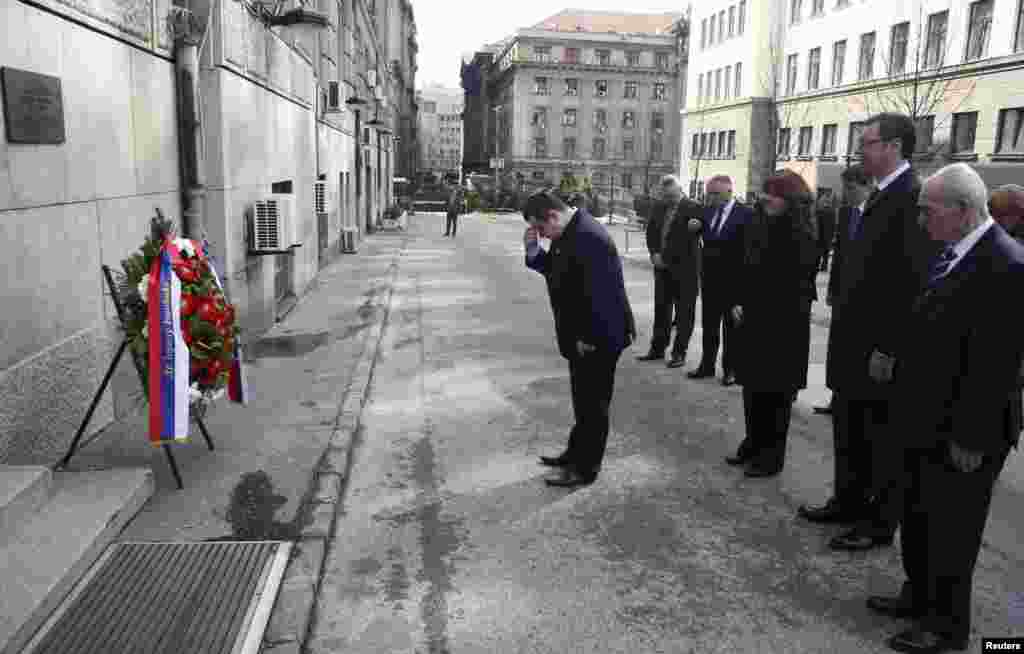
TV host: The police and the court start from the premise that there were only three bullets, that there were only two shell casings and that those two bullets were absolutely the same calibre. Could you please explain to me and our TV viewers how it is possible that the court did not accept the testimony of any person who happened to be on the spot?
NV: I only want to draw your attention to one detail. Everybody, apart from Milan Veruovic, who at the time on March 12, 2003, was lying on the operating table in hospital with surgeons trying to save his life…all the rest said that they were shot at three times…we have published a facsimile of those reports in our book. It can be seen at face value.
None of them suddenly remembered to say this at a later stage. None of them invented the story of the third bullet. That story about the third bullet existed from the very first moment and those people have not changed their statements even later. That is one thing. Another thing is that none of the witnesses confirmed the indictment that Zoran Djindjic [whose leg was in plaster and he was walking with crutches], that he got out of the car, went to the government building, and then he turned 180 degrees to open that door with his back somehow…
TV host: …the door which did not have a door handle.
NV: By the way that part of the story is insane but I can mention that too. And then he was hit because the entrance gunshot wound was undoubtedly on the right side. So he was hit from the Admiral Geprat Street. That is what the official version says. And then he again “rotated” around his right leg and then with the weight of his body opened the door and fell to the ground with his face frontally. That is the official version… So we have the police officers from the Government building….First of all, one cannot open the door in that way. That was confirmed in court. There was no door handle. The reason why this is relevant is…
TV host: …the door can be opened from the inside.
NV: The door is opened from the inside and that was just a simple door knob. And the reason why it is relevant is that the forensics expert witnesses who upheld the official version said, among other things, that Zoran Djindjic pressed the door handle. Look at the photos from the police investigation; unfortunately, that door was thrown away but then we were able to see that was a door knob which is pushed, which is an electrical one and one cannot open it in that way, it can be done from inside. A button can be pressed from the guard’s cabin outside of the building, and that is how you open it.
The expert witnesses say,..I say this is simply a series of incredible details…They say: “Zoran Djindjic opened the door by using the weight of his body and then they were asked…[all this is happening in the court where a lot of other reporters were] and at the end of the day we had the transcripts as well. When they were asked how heavy that door was and the expert witnesses said they did not know.
Then they were asked how heavy that [door] mechanism supporting the door was? The expert witnesses replied that they did not know. They were then asked how heavy Zoran Djindjic was. The expert witnesses replied that they did not know. If they said that he opened that [heavy] door by the weight of his body, it just goes to describe in what [an odd] way all of that was carried out. Yet shall I get back to the moment Zoran Djindjic was standing when he was shot. Thus, that was the official version which reported about the “two turns” of 180 degrees.
The first thing was: The photos from the investigation clearly showed, and the police technicians who carried out the investigation also testified, they showed three or four bullet holes inside the building. Therefore, if the door had been open, those bullet holes could not have been created there, and if the door had been open, then Zoran Djindjic had no reason to turn his back to that building with one leg already in plaster. That is the first thing. The second thing is: we have the testimony by a police officer from the building who opened the door and who testified that he looked Zoran Djindjic in his face….
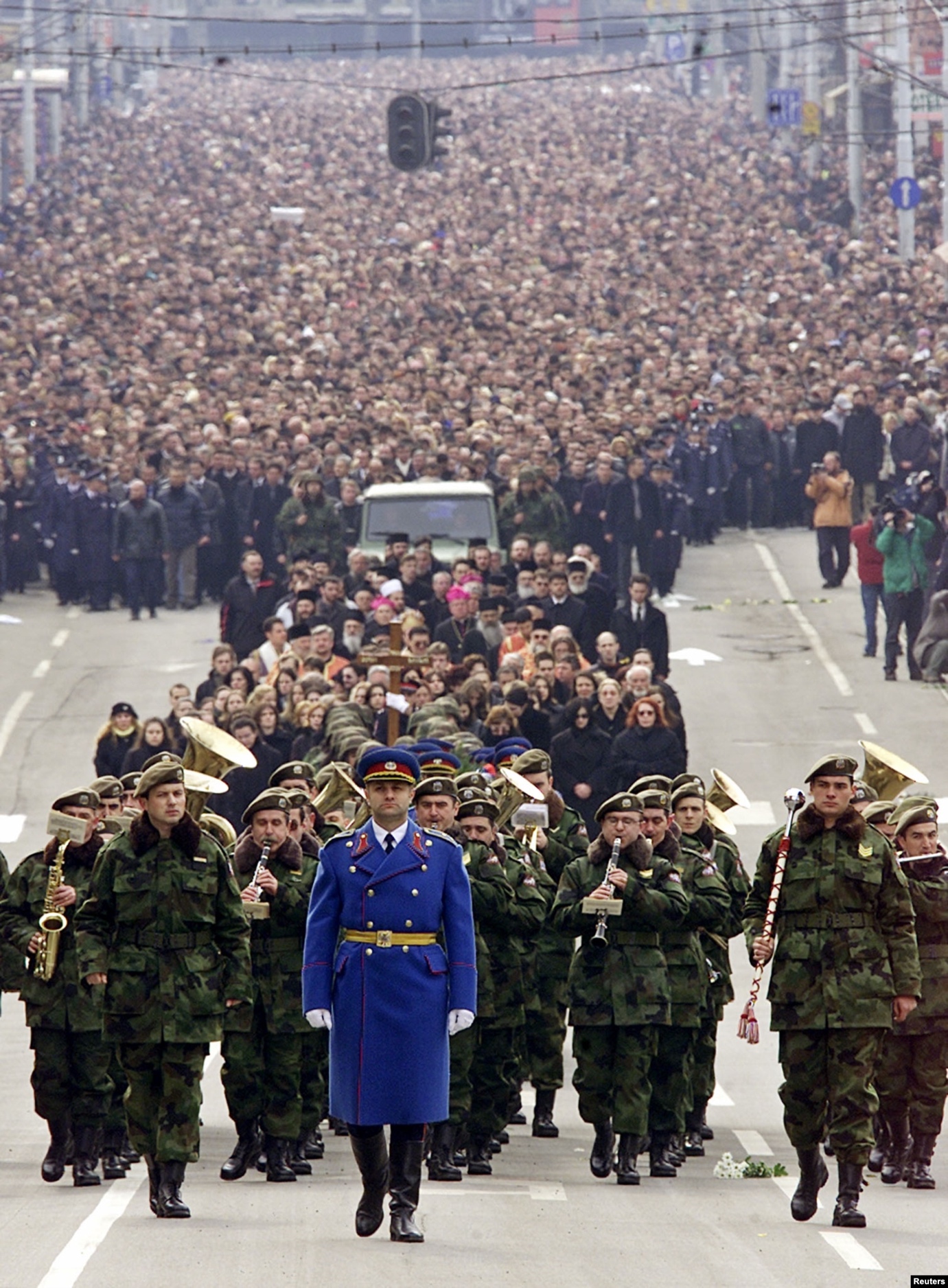
TV host: The man said that he opened the door and they still claimed that the door was closed?
NV: Well, yes, and moreover that door had to be supported with the door wedges, they say, so as to avoid that the door bang shut on its own and they really were, one can see that in all the photos, I say, one would not be able to simply go in and not only that but also the late Minister of Education Gasha Knezevic’s chauffeur, who was sitting in the car at the moment of the assassination, also testified. The man said there was music playing so he couldn’t hear if there were and how many shots there were but he was watching all the time. He was sitting in the parking lot opposite and he says he saw the motorcade of cars come and PM Zoran Djindjic get out of the car, go toward the door, he gets shot and he falls down.
TV host: Milan Veruovic, the man who was inside and Minister Gasha Knezevic’s chauffeur, three witnesses in total say the door was open but the expert witnesses claimed the door was closed? So the court starts with the premise that the door was closed even though there are no witnesses for that?
NV: Yes, and nobody established how to…[TV host interrupts Nikola here]
TV host: Let us get back to what I asked you…How can that be possible? What is it that drives a person, regardless of whether it is a police officer, a prosecutor or a judge, to accept something that is being denied by eight or nine people? So, nine people say that there was another shot, there was another bullet which hit somewhere or killed somebody; that could have been in a different order from what we know; how is it possible that those people dismiss something which is a fact? You are an experienced man. You have life experience, you have experience of an investigative journalist. How can you explain this based on sound logic? Please explain.
NV: All the explanations are very difficult for those who made this sort of decision. Of course it is impossible. Look, I am not a lawyer by education, but I can read and I can think.
TV host: It is about the basic logic here and not about the law any more.
NV: Exactly. The complete official version is based on the forensic expert witnesses’ report. Material evidence was completely ignored. Anything that [inconveniently] stands out and challenges the narrative, was totally ignored and also the cooperating witnesses and a series of their testimonies. When you make a cross section of the cooperating witnesses’ testimonies with one another on one hand with some objectively established facts, those “do not hold water.” There is a whole chapter in the book, [so] I do not wish to go into too many details here.
TV host: Is there a chance that those nine people made “an agreement” among themselves, to tell lies for some reason?
NV: Well there is no chance, because first, as I have said, the facsimile is in our book.
TV host: Is there a chance that they have fallen prey to delusions? That they think they heard something which, in effect, they did not hear?
NV: It might be in theory. But out of those nine people, five of them saw when the bullet hit and to say that all that about them was an unprecedented case of mass hypnosis, that they might be hypnotized in the same way, it cannot happen….As I have said, the Germans carried out the forensics.
TV host: And they proved the material presence of the bullet? Is that so?
NV: That bullet hit the wall of the building and shattered to pieces and they did the forensics on that bit and they say there were no biological traces in that place.
TV host: Is it possible to draw a conclusion that our Prime Minister Djindjic was shot at from a gun of a much bigger calibre from the opposite side of the street from Bircaninova Street?
NV: Absolutely.
TV host: That in fact that was the first bullet? And then two bullets came from Admiral Geprat Street which injured Milan Veruovic and one hit the wall. Is this what could explain three shots…?
NV: Absolutely. Yes. Now, shall we just be more precise about this now, when you’ve mentioned different calibres, that is yet another matter the court did not handle at all. The entrance wound is taken into consideration and not the exit wound, because the exit wound can take different forms. I look at it from the entrance wound. The entrance wound on the body of our late prime minister was much, much bigger, let me show with my hands …the entrance wound was this big on the body of our late prime minister, and the entrance wound on the body of Milan Veruovic was this big.
Allegedly, they were shot with the bullets from the same gun. I consulted complete reference literature with the expertise in this area, I talked with the experts on medical jurisprudence and with professors from Faculty of Medicine. It is absolutely impossible for a bullet calibre .762 or was it .765 [it is irrelevant here] to create such a big entrance wound but, even the expert literature says that the size of the entrance wound, depending on the angle, it always matches the bullet calibre but even due to the extensibility of the skin can be a little smaller. There is also damage on the clothes to confirm that.
TV host: It has not been noted down that the wound could be bigger?
NV: But how? How can this make a bigger wound? It cannot. [NB: Nikola Vrzić is using his hand gestures to explain his point.] It is not physically possible.

-
The alleged mastermind was said to be Serbian paramilitary leader Milorad Ulemek. ↑
-
The KLA had been branded as a terrorist organization by the U.S. State Department mere months before the U.S.-NATO War and sought to forge a Greater Albania. Its leader, Hashim Thaçi is currently on trial at the Hague for crimes against humanity. ↑
-
Dear children—this way of communicating with the reporters was a way of showing that the former judge was a seasoned professional in his ripe age and he treated the reporters as his kids. In that context, this address was not disrespectful. ↑
-
After the assassination back in March 2003. ↑
-
Zemunski Klan—the notorious criminal gang from Zemun, a small city borough near Belgrade, managed by both the local clan leaders and CIA. ↑
-
The Commission for Investigation of the Security System of the President of the Government (PM) of Republic of Serbia, Dr. Zoran Djindjic. ↑
-
That is, i.e., the Minister of the Police. ↑
-
The Democratic Party in Serbia, not the one in the USA. ↑
-
Boza Prelevic a reputable Serbian lawyer, was Milan Veruovic’s lawyer in this legal case. ↑
CovertAction Magazine is made possible by subscriptions, orders and donations from readers like you.
Blow the Whistle on U.S. Imperialism
Click the whistle and donate
When you donate to CovertAction Magazine, you are supporting investigative journalism. Your contributions go directly to supporting the development, production, editing, and dissemination of the Magazine.
CovertAction Magazine does not receive corporate or government sponsorship. Yet, we hold a steadfast commitment to providing compensation for writers, editorial and technical support. Your support helps facilitate this compensation as well as increase the caliber of this work.
Please make a donation by clicking on the donate logo above and enter the amount and your credit or debit card information.
CovertAction Institute, Inc. (CAI) is a 501(c)(3) non-profit organization and your gift is tax-deductible for federal income purposes. CAI’s tax-exempt ID number is 87-2461683.
We sincerely thank you for your support.
Disclaimer: The contents of this article are the sole responsibility of the author(s). CovertAction Institute, Inc. (CAI), including its Board of Directors (BD), Editorial Board (EB), Advisory Board (AB), staff, volunteers and its projects (including CovertAction Magazine) are not responsible for any inaccurate or incorrect statement in this article. This article also does not necessarily represent the views the BD, the EB, the AB, staff, volunteers, or any members of its projects.
Differing viewpoints: CAM publishes articles with differing viewpoints in an effort to nurture vibrant debate and thoughtful critical analysis. Feel free to comment on the articles in the comment section and/or send your letters to the Editors, which we will publish in the Letters column.
Copyrighted Material: This web site may contain copyrighted material the use of which has not always been specifically authorized by the copyright owner. As a not-for-profit charitable organization incorporated in the State of New York, we are making such material available in an effort to advance the understanding of humanity’s problems and hopefully to help find solutions for those problems. We believe this constitutes a ‘fair use’ of any such copyrighted material as provided for in section 107 of the US Copyright Law. You can read more about ‘fair use’ and US Copyright Law at the Legal Information Institute of Cornell Law School.
Republishing: CovertAction Magazine (CAM) grants permission to cross-post CAM articles on not-for-profit community internet sites as long as the source is acknowledged together with a hyperlink to the original CovertAction Magazine article. Also, kindly let us know at info@CovertActionMagazine.com. For publication of CAM articles in print or other forms including commercial internet sites, contact: info@CovertActionMagazine.com.
By using this site, you agree to these terms above.
About the Author
Olga Peterson is a writer and translator living in Serbia.

